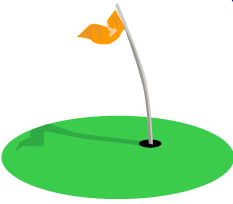Seems like talk of changing golf always comes up this time of year. Most likely because the Masters is just around the corner, which signifies the start of the golf season for many north of the Mason-Dixon Line. I have recently seen discussions of rolling back the golf ball or creating a tournament ball.
The subject of bifurcation has come up again, also; bifurcation, a glorified term for having a different set of rules for pros and amateurs. Like amateurs don’t play by different rules already. How many times have you seen mulligans off the first tee or inside-the-leather happy zones? Those same golfers then go in and post scores and receive handicaps. Every time I see or hear such talk, I am reminded of phrases like, “How you going to keep them down on the farm?” or “You can never go home again.”
In the history of golf, the game has never reversed course. The only constant has been the theme that more is better. And judging by the money invested in club and ball design, course conditions and extravagant clubhouses, it must be worth it. Sometimes I think there is more science in the head of a driver than in a NASA rocket. Tour pros are hitting the ball well over 300 yards, requiring courses to be stretched to 7,500-7,600 yards to keep them at bay. Many old and venerable courses can’t hold up to the onslaught. A lot of traditionalists don’t like that and advocate slowing things down. The problem is that a majority loves the long ball, and advertisers provide the siren song for their odyssey.
I don’t see reversing course as an option. Too much money for all concerned at stake. Besides no one wants an old jalopy when a shiny new chic mobile can be had so easily. Slowing it down. I don’t see it anytime soon. That ship sailed long ago.
By Mike Stevens, USGTF Member and Contributing Writer, Tampa, Florida
Copyright © 2023 United States Golf Teachers Federation, All Rights Reserved
200 S. Indian River Drive, Suite #206, Fort Pierce, FL 34950
772-88-USGTF or 772-595-6490 - www.usgtf.com
200 S. Indian River Drive, Suite #206, Fort Pierce, FL 34950
772-88-USGTF or 772-595-6490 - www.usgtf.com

